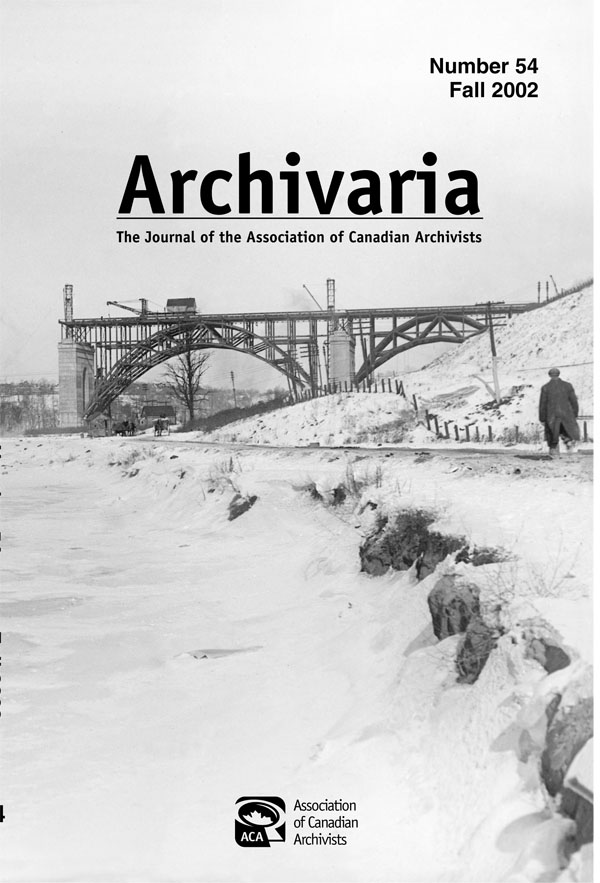Coming to Terms with Photographs: Descriptive Standards, Linguistic "Othering," and the Margins of Archivy
Abstract
This essay confronts certain assumptions held by archivists relating to photographs, in particular, those which govern the terms we employ in our professional pursuits. It suggests that, if users of archives have persistently failed to appreciate the value of visual materials, then archivists -- through their standards and practices -- are, in large measure, responsible. Because photographs are understood and preserved in libraries and archives in different ways and for different reasons, institutional discourse, and the practices which are naturalized by and within them, are examined, with particular focus on the use of the terms "special media" and "non-textual,", on the adoption by RAD of "graphic material" for art and photography, and on the implication for item-level digitization. Finally, it suggests that by embracing a textual model of recorded information and by adopting a bibliographic model of image classification, we continue to fixate on the factual content rather than the functional origins of visual images. As a result we fail to engage fully with new and exciting ideas about representation and reality, context and meaning, and in the process, relegate photographs to the margins of archivy.
RÉSUMÉ
Cet article confronte certains postulats des archivistes concernant les photographies, en particulier en ce qu'ils façonnent le vocabulaire de notre pratique professionnelle. Il suggère que les archivistes, à travers leurs normes et leurs pratiques, sont dans une large mesure responsables du fait que les utilisateurs des archives n'ont jamais apprécié à leur juste valeur les documents visuels. Parce que les photographies sont comprises et conservées de façon différente dans les bibliothèques et les centres d'archives, l'article s'attache au discours institutionnel et aux pratiques de celles-ci, particulièrement à l'usage des termes « special media » et « non-textual », à l'adoption par les RDDA du terme « graphic material » pour décrire l'art et la photographie et aux implications pour la numérisation à la pièce. L'auteure suggère enfin que, en adoptant un modèle textuel de l'information consignée et un modèle bibliographique de la classification des images, nous perpétuons notre fixation sur le contenu factuel au lieu de se concentrer sur les origines fonctionnelles des images. En conséquence, nous n'arrivons pas à incorporer les idées nouvelles et stimulantes sur la réalité et la représentation, le contexte et le sens, et ce faisant, nous reléguons les photographies aux marges de l'archivistique.
Authors of manuscripts accepted for publication retain copyright in their work. They are required to sign the Agreement on Authors' Rights and Responsibilities that permits Archivaria to publish and disseminate the work in print and electronically. In the same agreement, authors are required to confirm that "the material submitted for publication in Archivaria, both in its paper and electronic versions, including reproductions of other works (e.g. photographs, maps, etc.) does not infringe upon any existing copyright." Authors of manuscripts accepted for publication retain copyright in their work and are able to publish their articles in institutional repositories or elsewhere as long as the piece is posted after its original appearance on archivaria.ca. Any reproduction within one year following the date of this agreement requires the permission of the General Editor.





